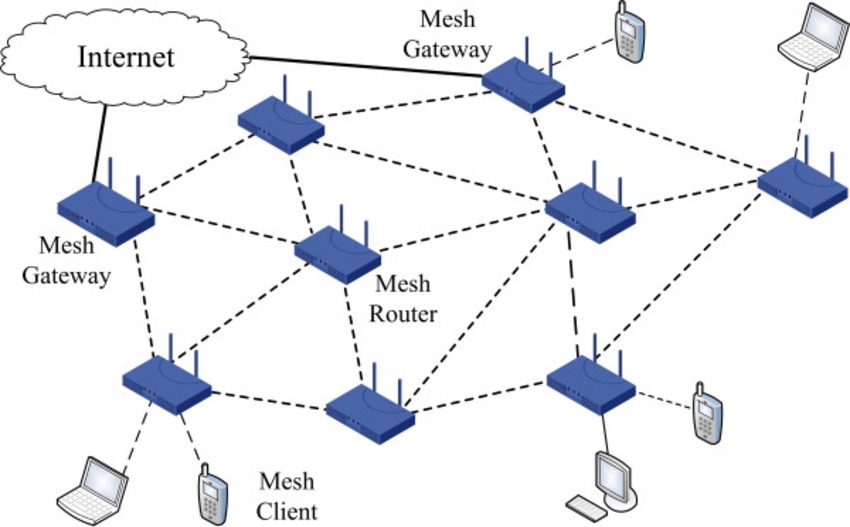
How Smart Homes Are Learning Human Emotions.
Smart homes are evolving beyond simple automation, learning to detect and respond to human emotions through AI, sensors, and behavioral analytics. By analyzing facial expressions, voice, and physiological signals, these intelligent systems adapt lighting, temperature, music, and ambiance to improve mood, reduce stress, and enhance well-being, creating living spaces that are empathetic, personalized, and emotionally aware.
✨ Raghav Jain

Introduction: The Emotional Intelligence Revolution in Smart Homes
For decades, the concept of a “smart home” meant a space equipped with automated lights, thermostats, or voice assistants like Alexa and Google Home. But the next phase of home automation isn’t about convenience — it’s about connection. Imagine walking into your house after a stressful day, and your living room lights dim automatically, your favorite calming playlist starts, and the air smells faintly of lavender. You didn’t issue a single command. Your home knew how you felt.
This is no longer science fiction. Smart homes are learning to read and respond to human emotions using advanced artificial intelligence (AI), biometric sensors, and behavioral data. These “emotionally intelligent” systems represent a new frontier in technology — one where our living spaces not only understand our habits but also empathize with our moods.
1. The Science Behind Emotionally Intelligent Homes
To understand how smart homes detect emotions, we must look at how machines interpret human emotional cues. Emotion recognition technology combines several branches of AI — machine learning, computer vision, voice analysis, and biometric sensing. Together, they analyze indicators like:
- Facial expressions: Cameras embedded in devices or mirrors recognize micro-expressions — fleeting facial movements that reveal emotions such as joy, anger, or sadness.
- Vocal tone: Smart speakers can analyze changes in pitch, tone, and speed to detect mood variations.
- Body language and movement: Smart sensors can interpret posture or gesture patterns to infer stress, fatigue, or restlessness.
- Biometric signals: Wearable devices or furniture equipped with biosensors can track heart rate, skin conductivity, and body temperature — all of which correlate with emotional states.
For example, Samsung’s “EmoSense” technology and Amazon’s “Halo” band have demonstrated the ability to infer emotional states through voice tone or physiological data. Combined with environmental sensors, these systems create a dynamic emotional profile of the inhabitants.
2. AI-Powered Adaptation: How Homes React to Your Feelings
Once a smart home identifies an emotional cue, AI algorithms translate it into adaptive responses. The goal is to enhance comfort, reduce stress, or boost well-being. Here’s how emotionally aware homes can respond:
- Lighting: Smart lighting systems like Philips Hue can automatically change colors based on mood — soft amber for relaxation, cool blue for focus, or vibrant tones for happiness.
- Temperature control: AI-driven thermostats like Nest or Ecobee can adjust temperature based on stress levels or physical comfort indicators.
- Music and soundscapes: Integrations with music platforms can curate playlists or ambient sounds suited to your emotional state — calming ocean waves when anxious, upbeat tracks when tired.
- Aromatherapy and air quality: Smart diffusers can release scents such as lavender or peppermint to influence mood and cognitive function.
- Home visuals: Future smart TVs and digital wall displays may project calming landscapes or visual art aligned with your feelings.
These subtle changes are designed to nudge the human emotional state toward balance, happiness, or calmness — creating a holistic, responsive living experience.
3. Data Collection and Emotional Profiling
The emotional intelligence of a smart home relies on continuous data collection. Every voice command, lighting adjustment, thermostat change, or facial expression adds to an evolving emotional profile.
How this data works:
- Short-term feedback loops: The home learns how you react in real time — for instance, detecting that dimming lights lowers your stress after work.
- Long-term behavior modeling: Over time, AI identifies emotional trends — such as recurring sadness in winter or anxiety during work hours — and adjusts routines proactively.
- Contextual understanding: The system cross-references calendar events, biometric patterns, and external factors (like weather) to predict emotional triggers.
This deep personalization creates a unique emotional ecosystem — a home that “knows” you. However, it also introduces ethical dilemmas surrounding privacy, consent, and emotional manipulation, which experts are actively debating.
4. Emotionally Intelligent Devices Already in Action
While the idea sounds futuristic, early forms of emotionally aware technology already exist:
- Amazon Alexa and Google Assistant: Both are experimenting with emotion detection through voice tone analysis. Alexa can respond empathetically when it senses frustration in your tone.
- LG ThinQ and Samsung SmartThings: These platforms integrate sensors that monitor sleep quality, energy levels, and emotional well-being.
- Moodmetric Ring and Fitbit Sense: These wearables track emotional arousal and stress through electrodermal activity.
- Cove and Sensate: Devices that use subtle vibrations to soothe users during anxiety episodes, linking physiological calmness to environmental cues.
As these systems converge within home ecosystems, we’re moving closer to houses that interact with residents at an emotional level rather than a functional one.
5. The Role of Machine Learning and Emotion AI
Emotion AI, or “Affective Computing,” lies at the core of emotionally intelligent homes. Developed initially by MIT researcher Rosalind Picard, this field enables machines to understand and simulate human feelings. Through deep learning models trained on massive datasets of faces, voices, and physiological responses, AI systems can now predict emotions with increasing accuracy.
Modern AI doesn’t just label emotions — it interprets them in context. For instance:
- A raised voice might indicate anger during an argument but excitement during a sports game.
- A high heart rate might signal stress — or simply post-exercise exhilaration.
Machine learning helps distinguish these subtleties by integrating situational data, such as time, activity, or location. The goal isn’t to “replace” human emotion but to complement it — allowing homes to respond appropriately and empathetically.
6. Emotional Design and the Psychology of Space
The emotional intelligence of a smart home isn’t limited to technology — it extends into emotional design. Psychologists and architects now work together to shape environments that foster mental well-being.
Key principles include:
- Biophilic design: Incorporating natural light, plants, and textures that reduce stress and improve mood.
- Color psychology: Using hues that evoke calmness or energy based on human perception patterns.
- Spatial flow: Designing spaces that support relaxation, creativity, and connection.
When paired with AI emotion detection, such designs amplify their effect — for instance, a smart lighting system that enhances the calming impact of a biophilic bedroom environment.
7. The Ethical and Privacy Challenges
While emotionally aware homes offer comfort and personalization, they raise critical ethical questions:
- Data privacy: Emotion data is deeply personal. Who owns it? Can companies access or sell it?
- Surveillance concerns: Cameras and microphones monitoring facial or vocal emotions may blur boundaries between help and intrusion.
- Bias in AI models: Emotion recognition algorithms often misinterpret expressions across different cultures, ages, and neurotypes.
- Emotional manipulation: There’s potential for systems to exploit emotional data for marketing — e.g., promoting products when users feel sad.
Tech companies are now developing frameworks for ethical emotional AI, ensuring transparency, consent, and local data processing (edge computing) to safeguard user privacy.
8. The Future of Emotionally Responsive Living
The next decade will likely bring a new wave of emotionally intelligent architecture — where buildings and devices collaborate to nurture human well-being. Imagine:
- Emotionally adaptive homes that detect family conflicts and adjust lighting and sound to ease tension.
- Wellness-driven offices that recognize burnout signs and suggest breaks or meditative environments.
- Elderly care homes that monitor loneliness or depression through emotional patterns and alert caregivers.
- AR/VR emotional spaces that blend physical and virtual comfort zones based on user mood.
This evolution may redefine “home” — from a shelter to a living partner that understands and supports its inhabitants emotionally.
The idea of a home that understands and responds to its inhabitants’ emotions was once the stuff of science fiction, but in recent years, the fusion of artificial intelligence, emotion recognition technology, and human-centered design has begun to make this vision real. Today’s smart homes are evolving from mere networks of connected devices into emotionally intelligent environments capable of interpreting human moods and adapting their responses accordingly. Using advanced AI models, biometric sensors, and behavioral analytics, these systems analyze a wide range of emotional cues such as facial expressions, vocal tone, body posture, movement, and even physiological signals like heart rate variability or skin temperature. Through this complex data, smart systems infer whether a person is stressed, happy, anxious, or fatigued and can automatically adjust environmental settings to enhance comfort and well-being. For instance, when you return home after a stressful day, your home might dim the lights, play calming music, and lower the temperature—all without a single verbal command. The underlying science draws heavily from affective computing, a branch of artificial intelligence that focuses on enabling machines to recognize, interpret, and simulate human emotions. Using neural networks trained on vast emotional datasets, these AI systems learn to detect subtle patterns that correspond to emotional states—like a quiver in the voice that signals sadness or a quickened pace that indicates agitation. Emotion recognition algorithms use multimodal data, combining voice analysis, facial recognition, and physiological tracking for more accurate results. Smart speakers like Amazon Alexa and Google Assistant are now equipped to detect vocal stress or frustration, while camera systems integrated into TVs or mirrors can analyze micro-expressions, which are brief, involuntary facial movements that reveal true emotions. Wearable devices such as Fitbit Sense or Moodmetric Ring provide additional biometric inputs, allowing the home ecosystem to sense stress or calm through physical indicators. Once the emotional state is detected, AI-powered systems respond by adjusting elements of the environment—lighting, temperature, sound, scent, and even visuals—to influence mood positively. Smart lighting like Philips Hue may switch to warm amber tones to induce relaxation or cool whites to boost focus, while thermostats such as Nest or Ecobee alter temperature based on comfort levels associated with emotional patterns. Music and ambient sound systems can curate playlists suited to the moment—soothing ocean waves when the user feels anxious, or energetic beats when motivation wanes. Some smart diffusers and air quality systems can even release specific aromas—lavender for calmness, peppermint for alertness—using emotional data triggers. These responses aim to create a deeply personalized emotional experience where the home becomes an intuitive companion that nurtures psychological and physical balance. However, to deliver such personalization, smart homes rely on extensive data collection, which builds an evolving emotional profile of each resident. Every interaction—light preferences, vocal tones, activity levels—adds to a data model that helps the AI understand long-term emotional patterns. For instance, it may notice recurring signs of low mood during winter or heightened stress during work deadlines, prompting proactive interventions like adjusting brightness levels or suggesting relaxation exercises. Over time, these homes can predict emotional states before they fully surface, offering preventive comfort. Yet, such intimate personalization raises pressing ethical and privacy questions. The very data that enables emotional intelligence—facial scans, voice recordings, physiological readings—is also highly sensitive. Who owns this emotional data? How is it stored, and who has access to it? There is an increasing debate among ethicists and technologists over the risks of emotional surveillance and the potential misuse of data for marketing or behavioral manipulation. For example, a company could theoretically promote mood-based advertisements when a user is sad or lonely. Additionally, emotion recognition AI still suffers from cultural and contextual biases—it might misinterpret expressions across different ethnicities or neurodivergent individuals, leading to inaccurate responses. Therefore, developers are now emphasizing privacy-first design, edge computing (where data processing happens locally instead of in the cloud), and transparent consent protocols to ensure that emotion-aware homes remain ethical and user-centered. Despite these challenges, the integration of emotional intelligence into living spaces holds tremendous promise for wellness, healthcare, and overall quality of life. Emotionally adaptive homes could soon assist in mental health monitoring by detecting signs of depression, anxiety, or burnout and offering environmental or digital support. Elderly care homes could monitor loneliness through emotion-recognition systems and initiate calls with caregivers or family members. Emotionally responsive offices might adjust lighting or music to reduce fatigue and increase focus. The combination of emotion AI and architectural psychology is also giving rise to emotionally intelligent design—where materials, colors, textures, and light are curated to influence human emotions positively. Biophilic design, which integrates nature-inspired elements such as greenery, sunlight, and natural textures, is increasingly paired with AI systems that dynamically adjust these features according to mood readings. For example, when stress levels rise, a home could simulate the natural hues and sounds of a forest to promote calmness. As machine learning evolves, emotion AI systems will continue to refine their accuracy by integrating situational awareness—understanding that a raised voice could mean excitement during a game rather than anger, or that a high heart rate might be due to exercise, not stress. The emotional intelligence of future homes will thus depend not only on raw data but also on contextual understanding, empathy modeling, and human psychology. The ultimate goal is to create a home that not only automates functions but also connects emotionally with its inhabitants—an environment that supports mental well-being, reduces stress, and fosters happiness through responsive design. In essence, emotionally aware smart homes represent a major step toward the next generation of human-technology coexistence. They transform our relationship with machines from one of command and response to one of subtle empathy and shared awareness. While ethical boundaries must be clearly defined to prevent misuse, the potential benefits—ranging from emotional comfort to proactive health support—are immense. As AI continues to mature, our homes will not just think with us but feel with us, evolving from lifeless spaces into dynamic, empathetic companions that nurture the human experience.
The concept of smart homes has evolved far beyond simple automation of lights, thermostats, and security systems, moving into the realm of emotional intelligence, where homes are beginning to perceive, interpret, and respond to human emotions in real time, a technological evolution made possible by the integration of artificial intelligence, machine learning, biometric sensors, and sophisticated behavioral analytics, allowing homes to move from being passive spaces of convenience to active participants in the emotional well-being of their inhabitants, where the walls, lights, sounds, and temperature are no longer static but adaptive, capable of creating personalized environments tailored to the mood, mental state, and physiological needs of each resident; this transformation relies heavily on affective computing, a branch of AI pioneered by researchers such as Rosalind Picard, which enables machines to recognize, interpret, and simulate human emotions using multimodal data inputs including facial expressions, voice tone, body language, and physiological signals such as heart rate, skin conductance, and temperature fluctuations, and these inputs are processed through complex algorithms and neural networks trained on massive datasets that help the system distinguish between subtle emotional cues and contextual nuances, such as differentiating excitement from stress, or distinguishing anxiety from physical exertion, allowing for a more precise and empathetic response from the home’s systems; in practical terms, this means that when a person walks into their house after a long, stressful day, the smart environment can detect signs of fatigue and tension through facial microexpressions or changes in posture captured by cameras and sensors, and simultaneously analyze vocal cues from any spoken words or even sighs, combine these with data from wearable devices such as smartwatches or rings that monitor heart rate variability and galvanic skin response, and then automatically adjust lighting to warmer, softer tones, lower the ambient temperature for comfort, play calming music or nature sounds through speakers, and even release subtle scents like lavender or eucalyptus via smart diffusers, creating a multisensory environment designed to soothe, relax, and optimize mood without requiring any manual input from the resident, essentially transforming the home into an empathetic companion capable of offering proactive support for mental and emotional health; further enhancing this process, machine learning enables smart homes to track and analyze behavioral patterns over time, developing personalized emotional profiles for each resident, understanding their typical stress triggers, energy peaks, and relaxation preferences, which allows for increasingly accurate predictions and proactive adjustments, such as preemptively lowering lighting and playing gentle music when it detects a pattern of anxiety during certain hours or in response to particular activities, or adjusting room temperature and humidity when it senses restlessness or difficulty sleeping, and all of this is managed through cloud-based AI ecosystems and edge computing that balance responsiveness with privacy, ensuring that sensitive emotional data is stored securely and used ethically, addressing one of the major challenges of emotionally intelligent environments; these systems are further augmented by integration with voice assistants like Amazon Alexa, Google Assistant, and Apple HomeKit, which are increasingly capable of detecting emotional states through speech analysis, tone modulation, and conversational patterns, allowing verbal interactions to become contextually aware and emotionally responsive, so that the home can respond not just with preprogrammed commands but with nuanced adjustments that reflect the user’s current state, for instance by suggesting mindfulness exercises, dimming lights for relaxation, or enhancing brightness and activity cues to boost alertness when signs of fatigue or low energy are detected; in addition to personal comfort, emotionally intelligent homes hold potential applications in healthcare and eldercare, as they can monitor for early signs of depression, loneliness, or cognitive decline through subtle changes in daily routines, vocal patterns, and activity levels, sending alerts or recommendations to caregivers or family members while simultaneously adjusting environmental conditions to support emotional stability, reduce stress, and encourage engagement with physical or social activities; beyond individual well-being, the integration of emotional AI into smart homes also opens avenues for adaptive social spaces, where homes can sense group dynamics and adjust environments accordingly, such as moderating lighting and background music during family gatherings to create harmonious atmospheres or using predictive analytics to anticipate tension in shared spaces, while also promoting mindfulness and relaxation techniques in common areas; however, the rise of emotionally aware smart homes also brings critical ethical considerations, including privacy concerns, consent for data collection, potential biases in emotion recognition algorithms, and the possibility of emotional manipulation for commercial purposes, as companies could theoretically use emotional data to influence purchasing decisions or engagement with digital content, making transparency, informed consent, and robust data protection policies essential to maintain trust between users and technology; despite these challenges, the combination of emotional AI, adaptive design, and sensor-driven personalization represents a significant leap forward in human-centered technology, where homes do not merely respond to commands but actively participate in nurturing mental and emotional health, employing principles from psychology, architecture, and biophilic design to create environments that promote relaxation, focus, and happiness; as this technology continues to advance, we can envision a future where smart homes become more than functional living spaces, evolving into empathetic partners that understand moods, anticipate needs, and foster well-being, transforming the way humans interact with their environments, and redefining the concept of home as a responsive, emotionally intelligent ecosystem, capable of balancing the technological efficiency of automation with the subtlety and nuance of human emotion, creating living spaces that are not only smart but deeply attuned to the psychological and physiological rhythms of their inhabitants, ultimately bridging the gap between artificial intelligence and human empathy in everyday life.
Conclusion
Emotionally intelligent smart homes mark a monumental leap in human-technology interaction. By combining AI, biometrics, and environmental automation, these homes are evolving from reactive systems to empathetic companions. They can detect stress through tone, read fatigue through facial cues, and respond with comforting lights, sounds, or scents — all without a command.
However, the journey is not without challenges. As homes learn to sense and store emotions, issues of privacy, consent, and emotional authenticity arise. Balancing innovation with ethics will be crucial to ensuring these systems nurture, rather than manipulate, human well-being.
In essence, the emotionally aware home is the next step in the evolution of personal technology — a space that not only thinks but also feels. It represents humanity’s enduring dream: to live in harmony with technology that truly understands us.
Q&A Section
Q1: How do smart homes detect human emotions?
Ans: They use emotion recognition technologies powered by AI, analyzing cues such as facial expressions, voice tone, body language, and biometric signals like heart rate or skin temperature to interpret emotional states.
Q2: Can smart homes really “feel” emotions?
Ans: No, they don’t feel emotions as humans do. Instead, they analyze data patterns that correlate with emotional cues and respond accordingly using preprogrammed or adaptive algorithms.
Q3: What are examples of emotionally intelligent devices?
Ans: Devices like Amazon Alexa, Samsung SmartThings, Fitbit Sense, and Moodmetric Ring can detect voice tone, stress levels, and other indicators of emotion to provide tailored responses or environmental adjustments.
Q4: Are there privacy risks with emotion-sensing technology?
Ans: Yes. Emotion data is highly personal, and improper use could lead to surveillance, manipulation, or unauthorized data sharing. Ethical frameworks and user consent are vital for safe implementation.
Q5: What benefits do emotionally intelligent homes offer?
Ans: They enhance mental well-being, reduce stress, personalize comfort, and create empathetic living environments by adapting lighting, temperature, sound, and ambiance based on emotional states.
Similar Articles
Find more relatable content in similar Articles

How Smart Homes Are Learning H..
Smart homes are evolving beyon.. Read More

How AI Cameras Are Changing Mo..
AI-powered cameras are revolut.. Read More

Why Mesh Networks Might Replac..
Mesh networks are transforming.. Read More

6G Networks: How Close Are We ..
"Exploring the Future of Conne.. Read More
Explore Other Categories
Explore many different categories of articles ranging from Gadgets to Security
Smart Devices, Gear & Innovations
Discover in-depth reviews, hands-on experiences, and expert insights on the newest gadgets—from smartphones to smartwatches, headphones, wearables, and everything in between. Stay ahead with the latest in tech gear
Apps That Power Your World
Explore essential mobile and desktop applications across all platforms. From productivity boosters to creative tools, we cover updates, recommendations, and how-tos to make your digital life easier and more efficient.
Tomorrow's Technology, Today's Insights
Dive into the world of emerging technologies, AI breakthroughs, space tech, robotics, and innovations shaping the future. Stay informed on what's next in the evolution of science and technology.
Protecting You in a Digital Age
Learn how to secure your data, protect your privacy, and understand the latest in online threats. We break down complex cybersecurity topics into practical advice for everyday users and professionals alike.
© 2025 Copyrights by rTechnology. All Rights Reserved.